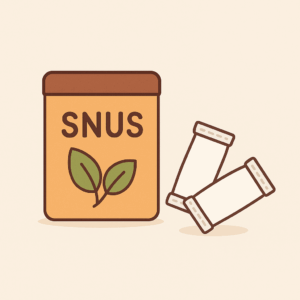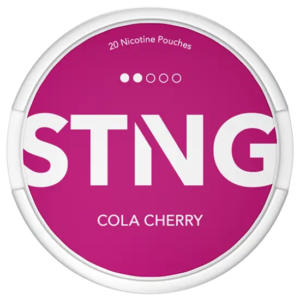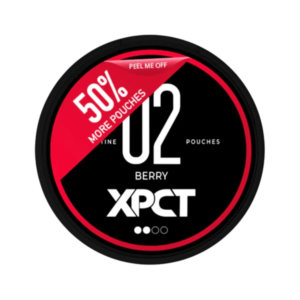What Is Snus?
Introduction
Many people are curious about what is snus and how it differs from the tobacco‑free nicotine pouches on the market. Snus is a moist, smokeless tobacco product that originated in Sweden. It is placed under the upper lip and delivers nicotine through the lining of the mouth. The product is so closely tied to Swedish culture that its very name comes from the Swedish word for snuff. Snus is popular in Scandinavia, but it is much less common elsewhere because of legal restrictions; for example, all European Union (EU) countries except Sweden ban the sale of snus With Sweden as the only EU state where snus remains legal, about 96 % of EU countries prohibit its sale. This fact underscores why what is snus is such a common question in markets like the United States and United Kingdom, where people encounter both nicotine pouches and references to snus. This article explains what is snus, how it is made, how it differs from nicotine pouches, and why nicotine pouches might be a better option for many users.
Origins and Composition of Snus
A Scandinavian tradition
To answer what is snus, it helps to understand its history. Snus developed in Sweden in the 19th century as a variant of snuff tobacco. Instead of being sniffed, the tobacco is ground, moisturised with water and salt, and then placed under the lip. It comes in loose form, where users shape a portion by hand, or in pre‑packed pouches. These pouches are brownish because they contain actual tobacco. When someone asks what is snus, one answer is that it is a way to consume tobacco without smoking or spitting; saliva is usually swallowed while using snus, making it discreet compared with chewing tobacco. The nicotine releases slowly through the mucous membranes of the mouth, providing a sustained nicotine experience.
Read our guide: How to use snus
Ingredients and flavours
The composition of snus reveals more about what is snus. Snus pouches contain tobacco, nicotine, water, salt and flavourings. The tobacco is pasteurised rather than fermented, which reduces certain harmful nitrosamines found in American dipping tobacco. Flavourings may include bergamot, herbs or fruit. The nicotine content varies but can be high, often ranging from 4 mg to over 20 mg per pouch. Because snus is made from tobacco, it contains all the compounds present in the tobacco leaf, including traces of carcinogens and heavy metals. This is a key distinction when people ask what is snus, since nicotine pouches extract nicotine from tobacco but remove the leaf itself. The presence of tobacco is why snus is regulated more strictly than nicotine pouches in many countries.
Read our guide: Nicotine Gum Vs Pouches
Cultural significance and use
Snus has been part of Swedish daily life for generations. Users place a pinch of loose snus or a pouch under the upper lip and allow the nicotine to seep into the bloodstream. A typical portion lasts 30 to 60 minutes. Because the product does not require spitting, it can be used discreetly in office settings or social gatherings. When people search what is snus, they are often intrigued by its cultural acceptance in Sweden and Norway despite its absence from many other markets. In recent years, some athletes and musicians have also popularised snus usage, contributing to its mystique. Nonetheless, the fact that 26 of the 27 EU countries ban snus highlights concerns about potential health risks.
Snus vs Nicotine Pouches
The most common follow‑up question to what is snus is how it compares with modern nicotine pouches. Both are small fabric pouches placed between the lip and gum, delivering nicotine without smoking. However, there are important differences in composition, regulation and user experience.
Read our guide: The Best ZYN Alternatives In The UK
Tobacco content and composition
The primary difference between snus and nicotine pouches is the presence of tobacco. What is snus? It is made from ground tobacco mixed with salt and water. By contrast, nicotine pouches are tobacco‑free; they contain nicotine derived from tobacco or synthesised in a lab, along with plant fibres, flavourings and sweeteners. The fibres are usually made from eucalyptus or pine. Because nicotine pouches lack tobacco leaf, they are white or off‑white and produce minimal staining of the teeth, whereas snus pouches are brown because of the tobacco. When consumers ask what is snus, it is important to note that snus will always contain tobacco; nicotine pouches will not.
Legal status and availability
Understanding what is snus also involves examining legal restrictions. In the European Union, the sale of snus is banned in all member states except Sweden. The ban was enacted due to concerns about oral cancer and other health risks. In the United States, snus is regulated by the Food and Drug Administration (FDA) but is not banned; however, it is less popular than cigarettes or nicotine pouches. Nicotine pouches, on the other hand, are widely available in many countries because they do not contain tobacco; they are regulated as nicotine products but typically face fewer restrictions. When people search what is snus, they often find that snus is hard to purchase outside Scandinavia, while nicotine pouches from brands like ZYN, VELO, White Gold, White Fox, Helwit and Pablo are sold in convenience stores and online shops. The accessibility of pouches is a major reason they are gaining popularity.
Read our guide: ZYN vs VELO
Health considerations
Another angle on what is snus is its potential health impact. Both snus and nicotine pouches deliver nicotine, which is addictive and can raise heart rate and blood pressure. However, because snus contains tobacco leaf, it carries additional risks associated with tobacco, such as exposure to carcinogenic nitrosamines and heavy metals. Some studies link long‑term snus use to increased risk of pancreatic and oral cancers, although the evidence is mixed. Nicotine pouches eliminate the tobacco leaf and many associated toxins, so they may pose fewer health risks, but research is still emerging. People who wonder what is snus often ask, “Is snus bad for you?” The safest answer is that any nicotine product carries some risk, but tobacco‑free pouches are generally considered lower risk than snus or cigarettes. Users should consult health professionals and consider quitting nicotine altogether.
Comparing Flavours and User Experience
Nicotine pouches and snus both come in a variety of flavours, but the taste profiles are different due to their compositions. When exploring what is snus, it becomes clear that snus flavours tend to be earthy and robust because of the tobacco; common notes include bergamot, licorice, whisky and juniper. In contrast, nicotine pouches can mimic mint, citrus, berry, coffee and even dessert flavours without the underlying tobacco taste. Brands like ZYN and VELO offer varieties such as Cool Mint, Citrus, Wintergreen and Coffee; Helwit focuses on natural flavours like mint and berry; White Fox and Pablo cater to users seeking stronger nicotine levels and colder sensations. The absence of tobacco allows flavourings to shine in nicotine pouches. This variety attracts former cigarette smokers and people who want to control their nicotine intake without using tobacco. When customers read about what is snus, they may decide to try nicotine pouches for their cleaner taste and discreet use.
Product Examples and Strengths
Learning what is snus often leads consumers to look at specific products. Popular nicotine pouch brands include ZYN, which offers strengths from 3 mg to 6 mg; VELO, with pouches ranging from 2 mg to 17 mg; White Gold and White Fox, which produce strong pouches up to 16 mg; and Helwit, known for sustainable production methods. Pablo is marketed as an extra‑strong nicotine pouch with high nicotine content. These products allow users to choose a level that suits their tolerance. Snus brands, meanwhile, often come in higher strengths: Swedish Match produces snus portions with 8 mg to 22 mg of nicotine per pouch. When people ask what is snus, part of the answer is that it often delivers more nicotine than the typical nicotine pouch, which may make it less suitable for those who prefer milder effects.
Read our guide: Discover Helwit Nic Pouches
Summary
The question what is snus invites a nuanced exploration of smokeless nicotine products. Snus is a moist tobacco product placed under the lip, containing tobacco, nicotine, salt and water. It releases nicotine slowly and has been part of Swedish culture for centuries. However, snus is banned in nearly all EU countries except Sweden, highlighting concerns about health risks. Nicotine pouches, by contrast, are tobacco‑free and rely on plant fibres and flavourings. They offer a wide range of strengths and flavours and are legal in many markets. Understanding what is snus versus a nicotine pouch reveals that the main difference is the presence of tobacco, which affects legal status, health risks and flavour. While snus continues to be used by millions in Scandinavia, nicotine pouches from brands like ZYN, VELO, White Gold, White Fox, Helwit, Pablo, Rogue, ALP and ON provide a tobacco‑free alternative for those seeking nicotine without smoke. Ultimately, knowing what is snus helps consumers make informed choices about their nicotine use and explore products that align with their preferences and health goals.







